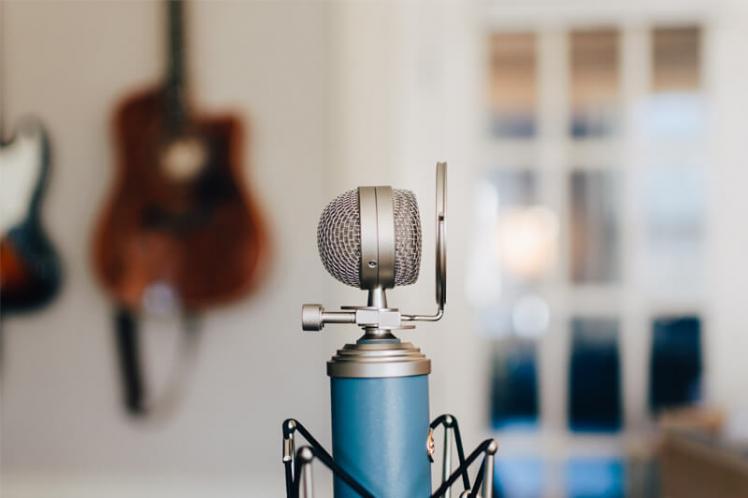Traps To Avoid When Creating Your Audio Brand

This article was updated on 13/09/2018
Why Use Audio Branding?
Audio branding can help enhance a brand's value to its consumers. In Audio Branding, we identify how you have an audio brand whether you like it or not – just like a visual brand. Which means that if it is not properly thought-out, it can come across as disjointed and confusing. When thoroughly considered and managed, however, an audio brand can help enhance a brand in a number of ways, including:
- Recall: Recognition of an audio brand can take place in a couple of seconds, sometimes even less. So the more touchpoints you activate with your brand’s music, the more memorable your brand will be.
- Meaning: Your unique brand sounds can express your specific promise, values, and personality, in a language that's understood around the world, allowing you to communicate and connect with your audience in ways you cannot with words.
- Coherence: First, something you are likely to already know: each touchpoint builds upon the others. However, the communication, interaction needs and next steps, are different at each touchpoint, often making it difficult to build brand consistency through visual elements alone. However, a well-maintained audio brand will build on all of the disparate touchpoints even when the visual needs changing, enabling a coherent brand experience and menu of brand associations.
- Clarity: Each piece of communication conveys an additional layer of meaning when its score is based in the brand’s proprietary sound. The opposite approach, licensing different music for each piece, creates audio chaos.
- Brand value: Leveraging a sense beyond sight can double your brand impact and build its long-term value. (Think Intel, which is currently in 14th place on Interbrand’s list of Best Global Brands, based on the value the branding contributes to the total value of the company[1].
- Unity: Your own recognizable music can contribute to a sense of team among your employees, partners, and even customers. Ringtones and other applications can enable these various audiences to show their pride in the branding as well.
- Simplicity: An audio brand simplifies the process of choosing and paying for music and makes it easy to create global consistency in all of your communications.
- Savings: As your library of compositions grows, assets can be repurposed hundreds of times over for every kind of purpose, without incurring additional licensing fees (and each time you use it, you reinforce the consistency of your brand experience).
- Subtlety: Once you have a consistent audio vocabulary, you can incorporate it in your shareable branded content, without having to shout about your brand.
The way audio branding works to define your melody, harmony, tempo, texture, instrumentation, and more, is very similar to the way visual branding works in defining your colors, typefaces, logo and other elements, just with a few subtle differences.
Essentially, if you understand the need for a thought-through and well-managed visual brand, you should also understand the need for an audio one.
3 Things to Avoid When Creating Your Audio Brand
Music is so good at stirring up emotions that sometimes, it can get in its own way. This is especially true when your goal is to create an audio brand that delivers a meaningful and differentiating brand position. As a result of this, there are some key traps to be wary of on your journey to creating a powerful audio brand.
Your audio brand should, no, must, help you to tap into emotions. But we must remember that not every emotion is right for a given brand. You wouldn’t use music that conjures up nostalgia if you’re trying to communicate innovation. Equally, you wouldn’t want up-tempo rhythms if you stand for calmness, and you can’t use swelling cinematic compositions if you wish to convey simplicity.
So how do you get to the right brand expression without falling into the common traps along the way? The first thing is to be aware of the dangers. Here are the top three to look out for:
- Personal likes and dislikes:Marketers, like everyone else, can sometimes feel so attached to the musical styles and songs they like, that they often lose objectivity about sound. Therefore, companies may end up with music that expresses the taste of a persuasive team member or an insistent boss, instead of making choices that truly reflect the style that conveys the brand's essence and values.
- Copycatting: People generally like to give solutions, yet it's more helpful to have them identify problems. For example, you might hear, "I want to get music like this piece. How close can we get to it without infringing on their copyright?" but the issue with this? The chances are that as a popular piece, it will soon go out of style. On the other hand, even if the piece becomes a classic, you won't be communicating in a distinctive voice because of the many other associations that will become attached to the composition.
- Predictability: This one is a real ‘gotcha’ because, discouragingly, the wrong research can actually hurt you. People like music that they're familiar with, and they may say positive things about an option during research if it has a comfortable sound. Yet a brand may actually be better off with music that is unexpected — as a sound that will break-through and become truly ‘ownable’.
The best way to steer clear of these traps is to hold to a clear process for developing your audio brand. Experienced audio branding agencies have developed rigorous methods and processes to keep the team from going off-track, one of which is detailed in Audio Branding: Using Sound to Build Your Brand.
Your job is to create an audio brand that conveys your brand promise, essence, and values, in a way that makes you stand out and be understood. For that, you need a clear process. The goal is to keep everyone focused on the core of the brand as well as the marketing problems the solution needs to solve.
The audio branding process, done right, will be familiar to any marketer, because it is similar to the journey that’s used in visual branding. At the beginning, cultivating a vibrant audio brand is all about defining your brand essence and values. At the end, it's about providing clarity and discipline to your marketing efforts. And in-between, it's about progressing through all of the key steps of any responsible branding initiative: competitive analysis, touchpoint analysis, audience analysis, identifying the territory you can occupy, strategy development, mood boards (in this case, strategically selected pieces of music grouped according to brand values), creation, selecting and refining finalists, possibly testing between the two or more of the strongest, evaluation, and refinement.
Done right, you’ll have a powerful new tool for differentiating a product or service, enhancing recall, creating preference, and building trust, giving you a clear competitive advantage to your competitors who don’t have an audio brand. Let’s get started now.
[1] Intel Increases Brand Value for 2nd Consecutive Year on Interbrand’s Best Global Brands List https://newsroom.intel.com/news/intel-increases-brand-value-2nd-consecutive-year-interbrands-best-global-brands-list/ Accessed February 27, 2017).





